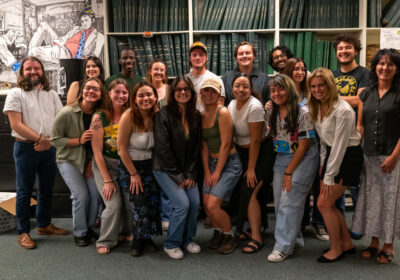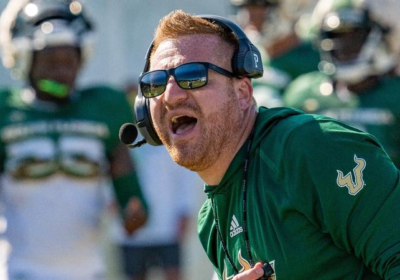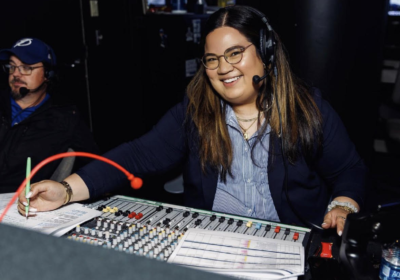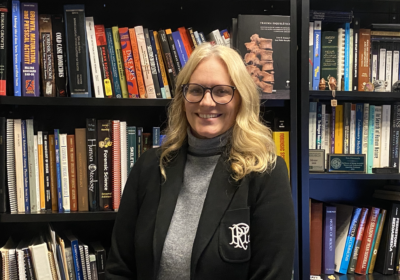Students make their way to DC for the 45th annual March for Life

The president of the Catholic Student Center at USF has organized a group of students to take part in March for Life in Washington, D.C., on the 45th anniversary of the famous Supreme Court ruling Roe v. Wade. SPECIAL TO THE ORACLE/ ASHLIE O’BRIEN
One of every American’s first amendment rights is the right to peaceably assemble. The most famous American marches and protests mostly took place in Washington, D.C. It seems to be the best place to make the most noise.
Some USF students, as well as thousands of others across the nation, will use this same venue to spread their ideas on one of the most controversial issues: abortion.
Ashlie O’Brien, a senior majoring in public health, is the president of the Catholic Student Union and is in charge of a group of students traveling together to D.C. to take part in March for Life.
“Our pilgrimage begins Thursday morning bright and early,” O’Brien said. “Our flight leaves Tampa International Airport at 8:05 a.m. We land in D.C. around 10:15 a.m. The trip incorporates mandatory events, but also leaves time for students to explore the history of our nation’s capital.”
The students taking part in this trip are required to attend a daily mass at Our National Basilica with students from all across Florida. The event itself, March for Life, is on Friday, which is the anniversary of the Roe vs. Wade decision. In this historic Supreme Court ruling in 1971, abortion was legalized in the U.S.
“We are there to march for the voiceless,” O’Brien said. “To peacefully protest for a greater respect of life from conception to natural death.”
Those taking part will march up Constitution Avenue to the Supreme Court and the Capitol building.
Each year, the event hosts speakers. According to the March For Life website, this year the lineup includes Paul Ryan, speaker of the House of Representatives. Speakers in the past include Former President George W. Bush and current Vice President Mike Pence.
On the homepage of the March for Life website are selected posts from multiple social media platforms that have used the #whywemarch hashtag.
“This will be my third year attending the March for life,” O’Brien said. “Believe it or not four years ago I was an avid pro-choice supporter, believing women had the right to choose what they do to their body. It wasn’t until I was re-converted to the Catholic Faith where Christ taught me the importance of life and that it is not ours to give or take.”
O’Brien has felt the repercussions that sometimes accompany abortion firsthand.
“I am a victim to abortion and lost my nephew through this hateful act,” O’Brien said. “I choose each year to march as an aunt, to march for my nephew, and to all those who are afflicted with tragic reality of abortion that are society suppresses.”
Like many supporters who make their way to the nation’s capital every year, for the past 45 years, O’Brien has faced opposition.
“My friends do share the same ideals, however my family and others I encounter do not,” O’Brien said. “I choose to live my faith publicly each and every day, facing rejection in order to live the Gospel as Christ modeled for us.”
Another student taking part in the march, Nicole Dunleavy, a junior majoring in secondary science education, believes that these opposing views should not impact relationships.
“I have many friends who share my beliefs about the pro-life movement and I also have friends who don’t share my beliefs,” Dunleavy said. “I think it’s important to respect each other’s beliefs in friendship regardless of how different they may be.”
At the first March for Life in 1974, several thousand marchers made their way through the streets of the capitol. In 1987, there was a record of 10,000 marchers. Since then the numbers have skyrocketed. According to VOX News, the march with the highest attendance took place in 2013 with an 650,000 attendants.
This is Dunleavy’s third time participating in the march and she said she believes there’s strength in numbers.
“When many voices come together to speak out on an issue, the likelihood that they will be heard increases significantly,” Dunleavy said. “Being a part of this movement allows me to have a small role in helping the message of the pro-life movement to be heard.”






